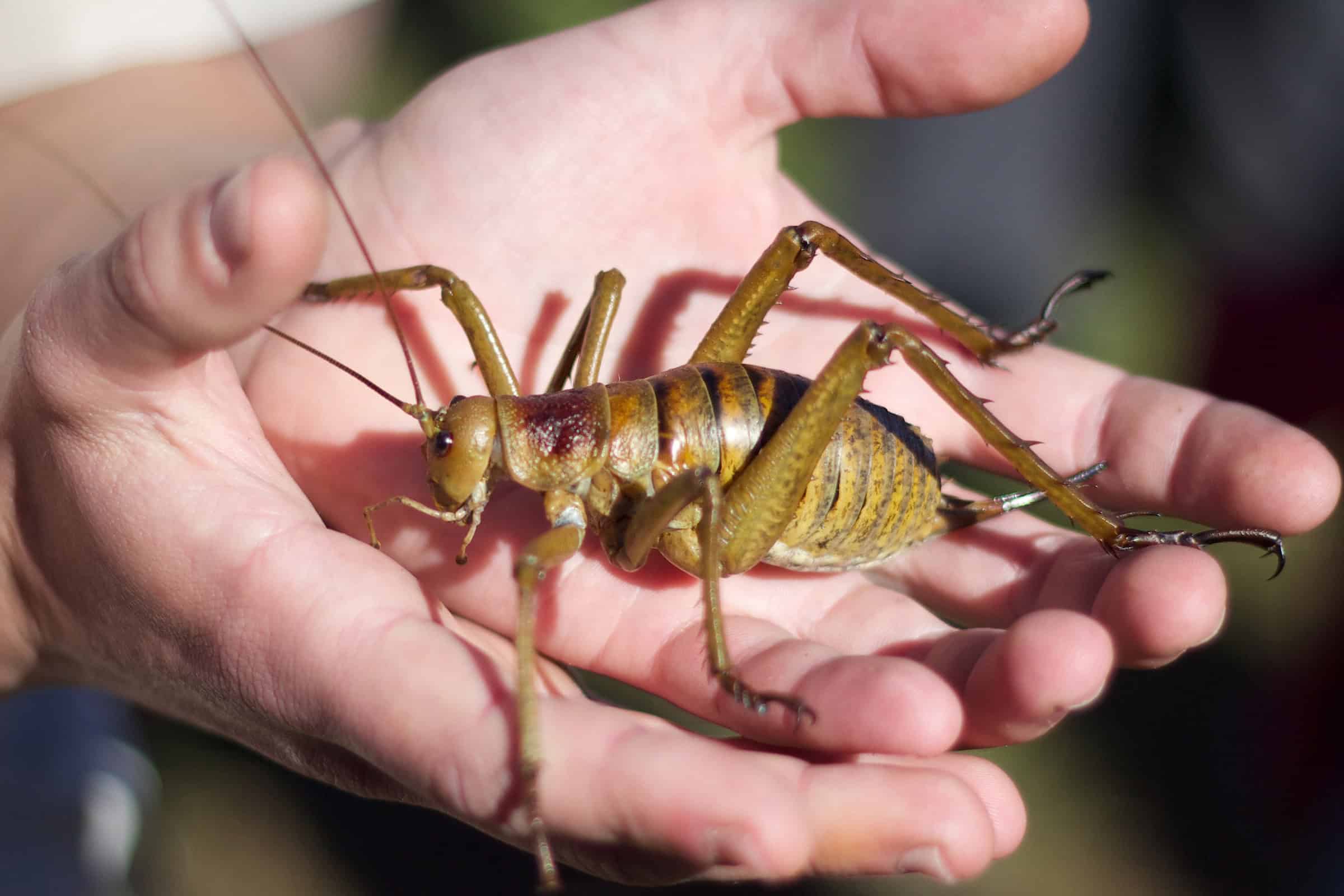Deserts are some of the most extreme environments on Earth, yet they are home to an incredible array of creatures with remarkable adaptations. These rarely seen animals have evolved unique traits that allow them to survive intense heat, lack of water, and scarce food sources. From camouflaging abilities to ingenious ways of collecting moisture, these adaptations showcase the resilience and ingenuity of desert wildlife. In this article, we’ll explore 20 fascinating desert creatures that have mastered the art of survival in one of the harshest habitats on the planet.
Thorny Devil (Moloch horridus)
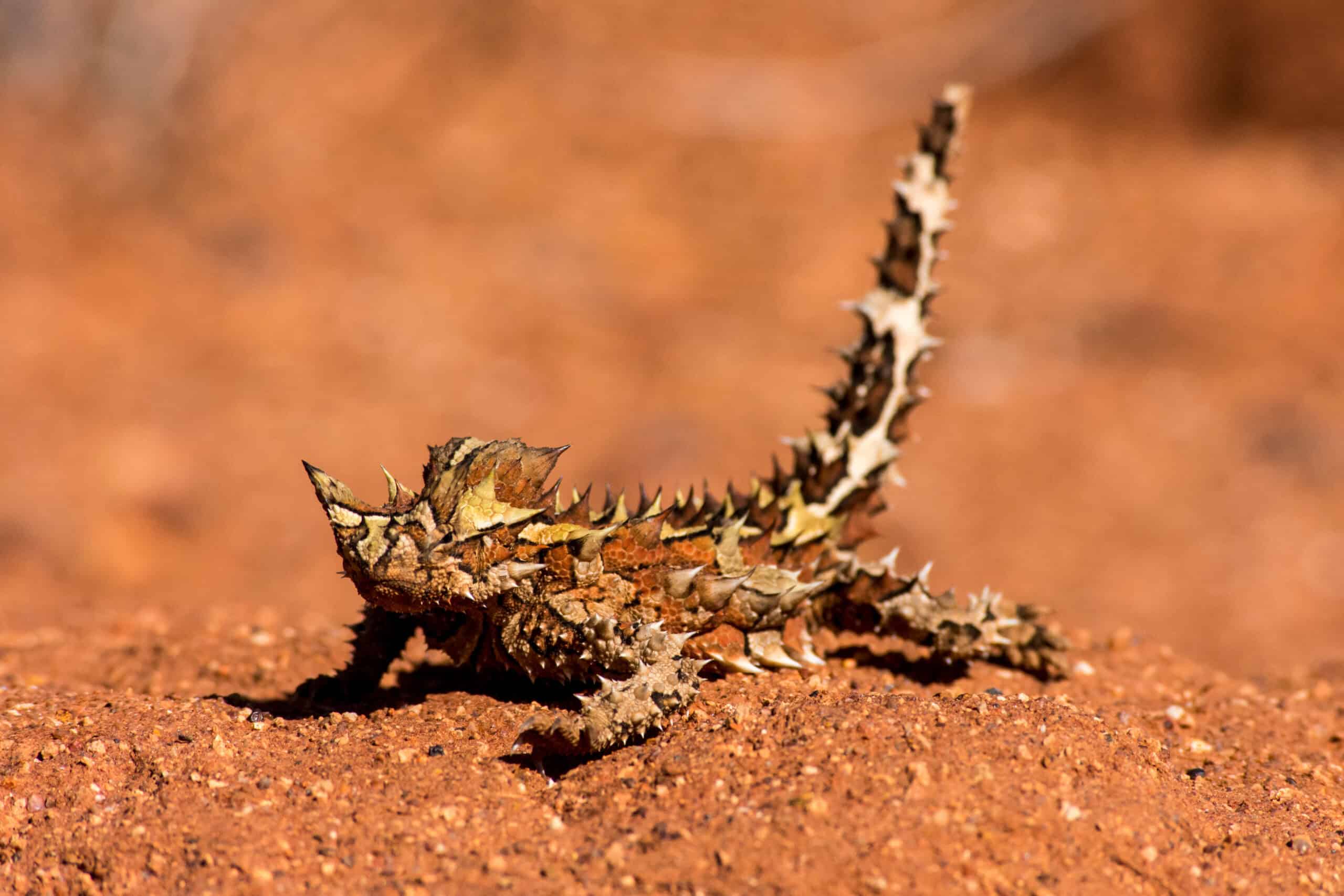
This spiky lizard, native to Australia’s arid deserts, has developed unique methods for surviving in such harsh conditions. The thorny devil collects water through tiny grooves between its scales, funneling moisture from dew or rain directly to its mouth. Its diet consists almost entirely of ants, consuming up to 3,000 in a single meal. Thorny devils are also capable of changing color to regulate body temperature, appearing lighter during the day and darker at night. Their slow-moving nature conserves energy, which is essential in such nutrient-scarce environments. Although their fearsome appearance may deter predators, they rely on camouflage to blend into their surroundings.
Saharan Silver Ant (Cataglyphis bombycina)
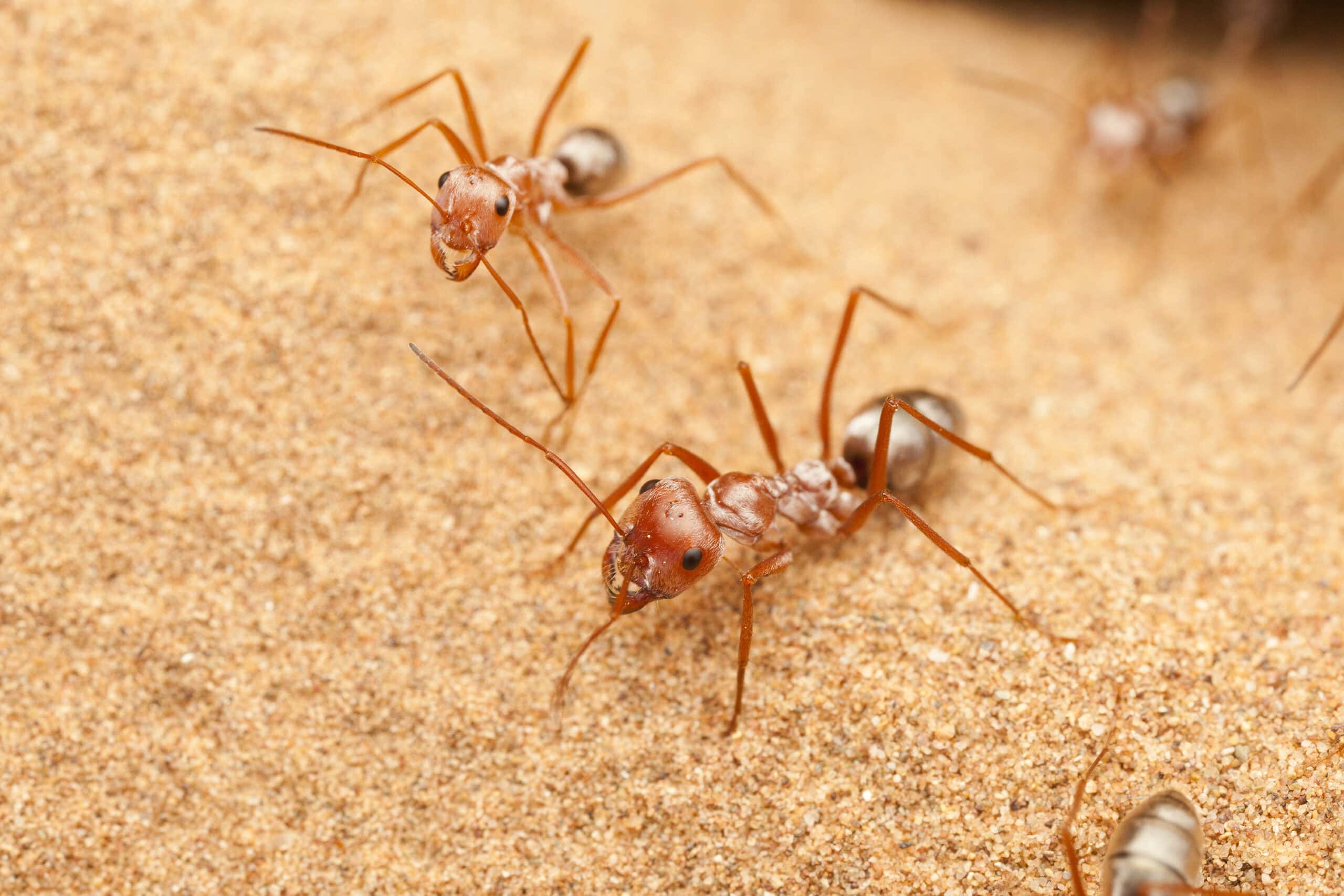
Residing in the Sahara Desert, these ants are some of the few animals that forage during the hottest part of the day. The Saharan silver ant’s reflective body surface helps it survive extreme temperatures, allowing it to withstand heat that would kill most other creatures. Their unique gait, with long legs that keep their bodies elevated above the hot sand, reduces the time their feet are in contact with the ground. They have a foraging window of just a few minutes at noon, during which they search for food without risking exposure to predators. Their nests are intricately constructed underground to maintain cooler temperatures. The ants are also equipped with incredible navigation skills, enabling them to find their way home quickly across featureless desert landscapes.
Fennec Fox (Vulpes zerda)
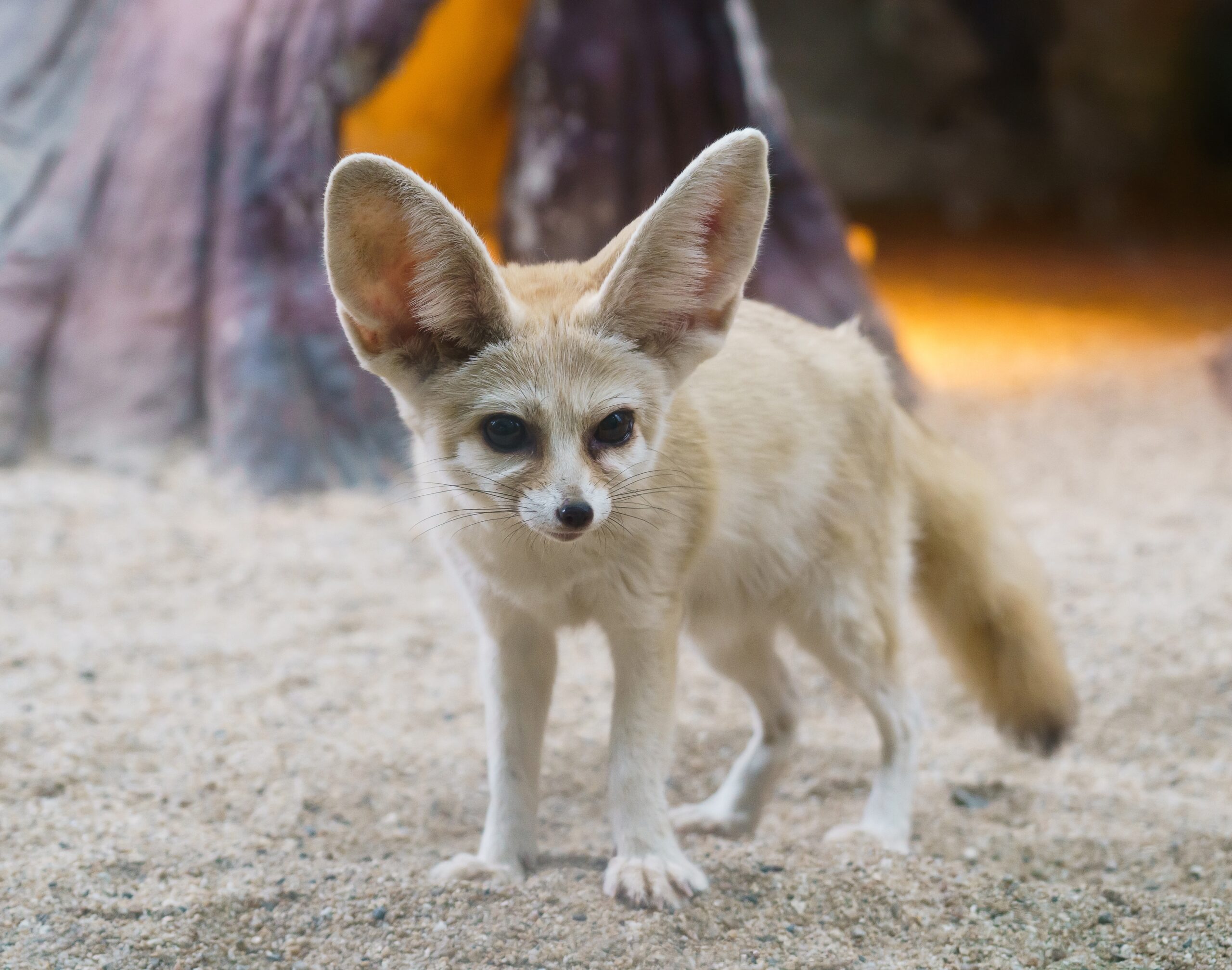
The fennec fox, found in the deserts of North Africa, is renowned for its large ears, which serve multiple purposes. In addition to giving them an extraordinary sense of hearing, their ears help dissipate heat and keep their bodies cool. These nocturnal hunters prey on insects, small mammals, and birds, taking advantage of cooler temperatures after dark. Fennec foxes are well-adapted to desert life, as they can go for long periods without drinking water, getting most of their hydration from the food they eat. They dig extensive burrows in the sand to escape the heat during the day. Their soft, sandy-colored fur provides excellent camouflage against the desert backdrop and insulates them from extreme temperatures.
Deathstalker Scorpion (Leiurus quinquestriatus)
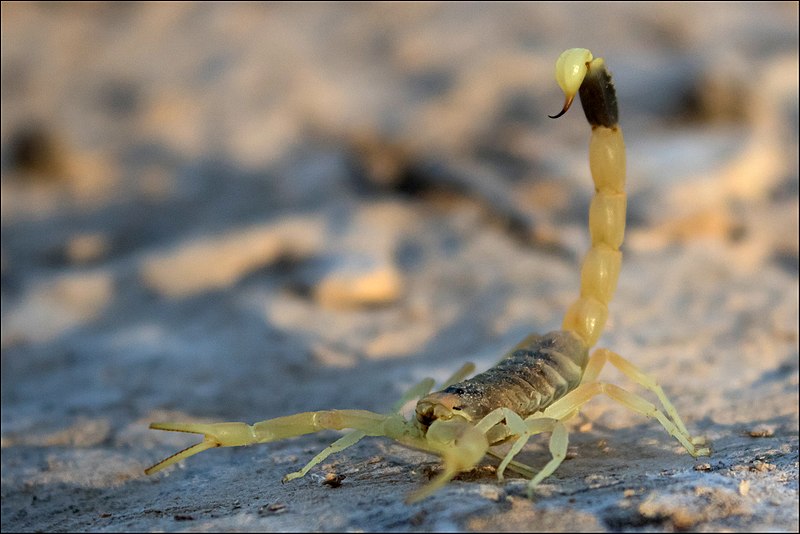
This highly venomous scorpion inhabits the deserts of North Africa and the Middle East, where it has evolved to survive in some of the most punishing environments. The deathstalker scorpion can slow its metabolism to survive on minimal food for months, which is a crucial adaptation in nutrient-scarce deserts. It burrows under rocks and sand to avoid the intense daytime heat, emerging at night to hunt for insects and other small creatures. Its venom is highly toxic and is used to subdue prey, though it is not typically fatal to humans. Despite its fearsome reputation, the deathstalker is essential to desert ecosystems, helping to control insect populations. Its ability to go for long periods without food or water makes it a master of survival in the desert.
Sidewinder (Crotalus cerastes)

The sidewinder rattlesnake is famous for its unique method of locomotion, which allows it to move across the desert sand without overheating. By lifting sections of its body off the ground in a sideways motion, it minimizes contact with the hot surface, enabling it to travel efficiently in extreme conditions. This rattlesnake has excellent camouflage, with a pale, sandy-colored body that blends seamlessly with its surroundings. Sidewinders use specialized heat-sensing pits near their eyes to detect warm-blooded prey in the dark, giving them an advantage during nocturnal hunts. They are ambush predators, lying in wait buried under the sand until unsuspecting prey comes close. Their venomous bite is used to quickly subdue small mammals and birds, and they can survive on just a few meals per year due to their efficient metabolism.
Desert Rain Frog (Breviceps macrops)
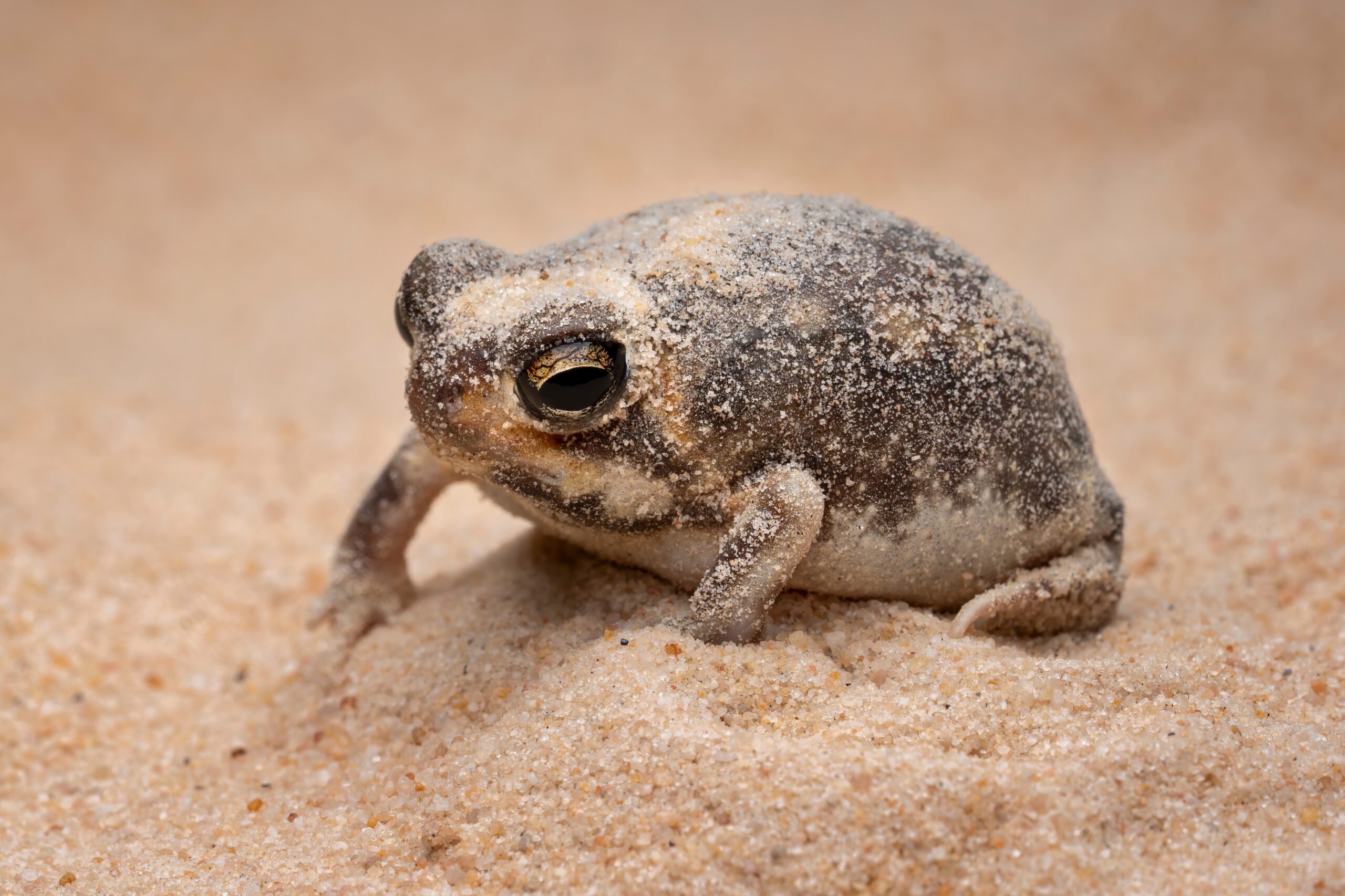
The desert rain frog lives along the Namib Desert coast, where it has adapted to one of the driest habitats on Earth. It spends most of its life buried in moist sand, which helps prevent dehydration, emerging at night to feed on small insects and invertebrates. Unlike most amphibians, this frog does not need standing water to survive, as it absorbs moisture through its skin from the surrounding sand. The frog’s high-pitched squeak, which sounds more like a toy than an animal, is used as a defense mechanism against predators. With its squat, round body and short legs, it’s not built for jumping but rather for digging and staying close to the ground. Its translucent skin also allows it to retain moisture better, which is essential for surviving the harsh desert environment.
Addax Antelope (Addax nasomaculatus)
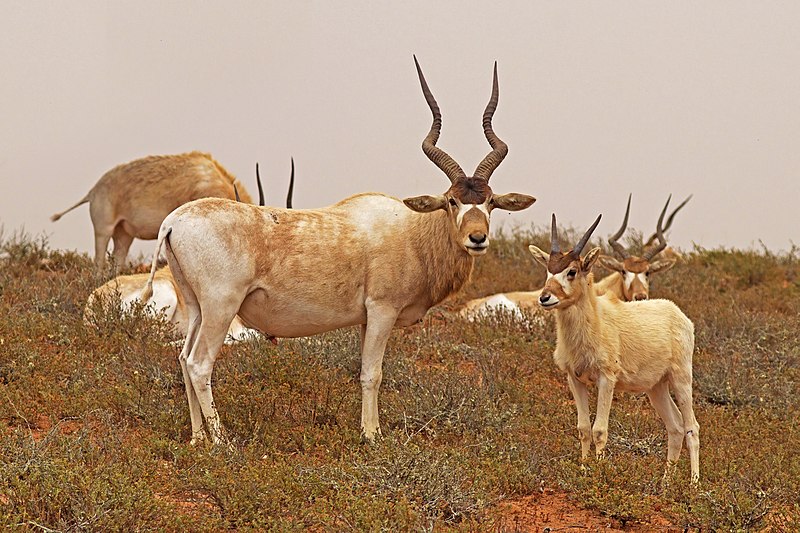
The addax antelope, which roams the Sahara Desert, is a critically endangered species perfectly suited to desert life. Its light-colored coat reflects sunlight, helping to keep it cool under the blazing sun, and it turns darker during colder months to absorb heat. Addaxes are able to go for long periods without drinking water, as they obtain moisture from the plants they consume. They are mostly nocturnal, resting during the heat of the day and becoming active at night when temperatures are cooler. Despite its large size, the addax has evolved to conserve energy, moving slowly to avoid overheating. Unfortunately, overhunting and habitat destruction have brought this resilient species to the brink of extinction.
Sand Cat (Felis margarita)
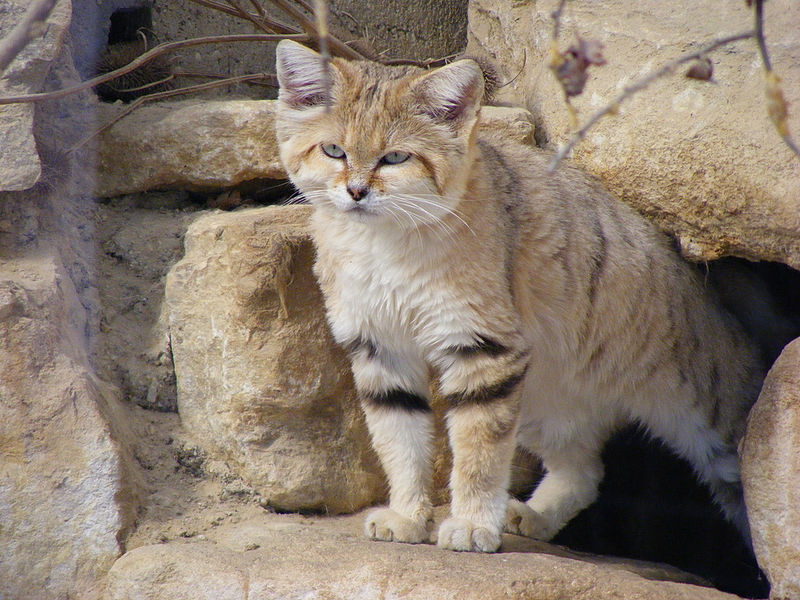
Native to the deserts of Africa and Asia, the sand cat is the only wild cat species that lives exclusively in the desert. Its thickly padded paws allow it to walk silently across the hot sand while protecting its feet from burning. The sand cat has large ears that enhance its hearing, allowing it to detect the faint sounds of prey moving underground. It hunts small rodents, birds, and reptiles, often storing excess food in burrows for later consumption. Sand cats can survive without drinking water, relying on the moisture in their prey to meet their hydration needs. Their fur, which is sandy in color, provides excellent camouflage and insulation, helping them survive the extreme temperature fluctuations of the desert.
Gila Monster (Heloderma suspectum)

The Gila monster, one of the few venomous lizards in the world, is native to the deserts of the southwestern United States and northwestern Mexico. It spends most of its life in underground burrows to avoid the heat, emerging primarily during cooler mornings and evenings. The Gila monster’s venom is used to subdue prey, and while its bite can be painful to humans, it is rarely fatal. This slow-moving lizard has a low metabolism, allowing it to survive on just a few large meals a year. It stores fat in its tail, which sustains it during times when food is scarce. Despite its fearsome reputation, the Gila monster plays an important role in controlling rodent populations in its desert habitat.
Kangaroo Rat (Dipodomys spp.)
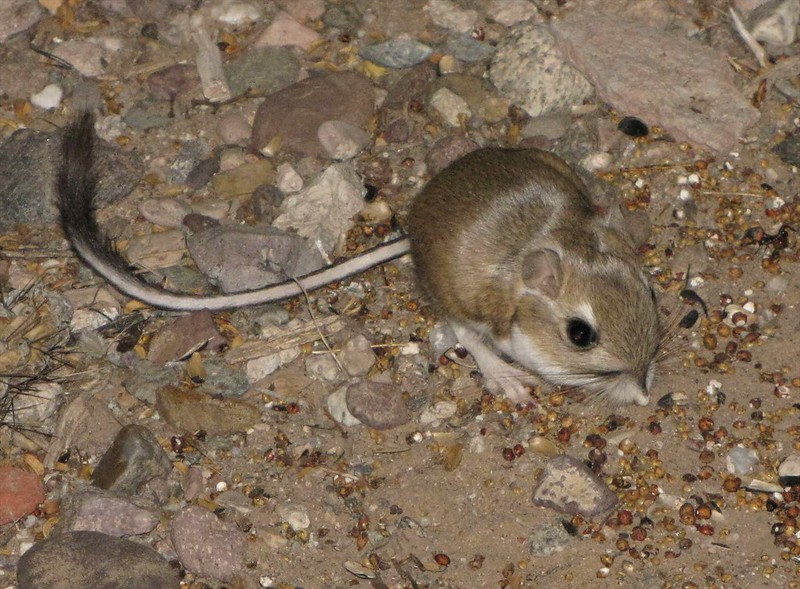
Kangaroo rats, native to the deserts of North America, are known for their incredible ability to survive without drinking water. They obtain all the moisture they need from the seeds they eat, and their specialized kidneys allow them to conserve water by producing highly concentrated urine. These small rodents have long hind legs that enable them to leap quickly through the desert, much like a kangaroo. They are nocturnal, foraging at night to avoid the extreme heat of the day. Kangaroo rats also have cheek pouches where they can store seeds, which they later bury to create food caches. Their ability to thrive in some of the driest environments on Earth is a testament to their remarkable adaptations.
Namib Desert Beetle (Stenocara gracilipes)
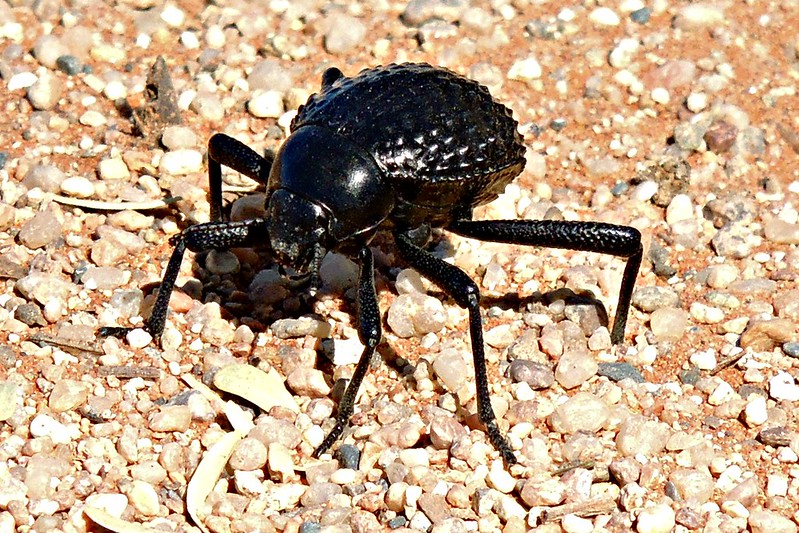
Living in one of the most arid environments on Earth, the Namib Desert beetle has developed a unique way to collect water. It stands on its head in the early morning fog, allowing moisture to condense on its back and flow down to its mouth. This beetle’s hard, black exoskeleton protects it from the sun’s harsh rays and helps retain moisture. It is primarily nocturnal, spending the hottest part of the day hiding under rocks or burrowing in the sand. The beetle feeds on detritus and plant material, taking advantage of the sparse vegetation in the desert. Its ability to harvest water from the air is a remarkable adaptation to life in such an inhospitable place.
Desert Hedgehog (Paraechinus aethiopicus)
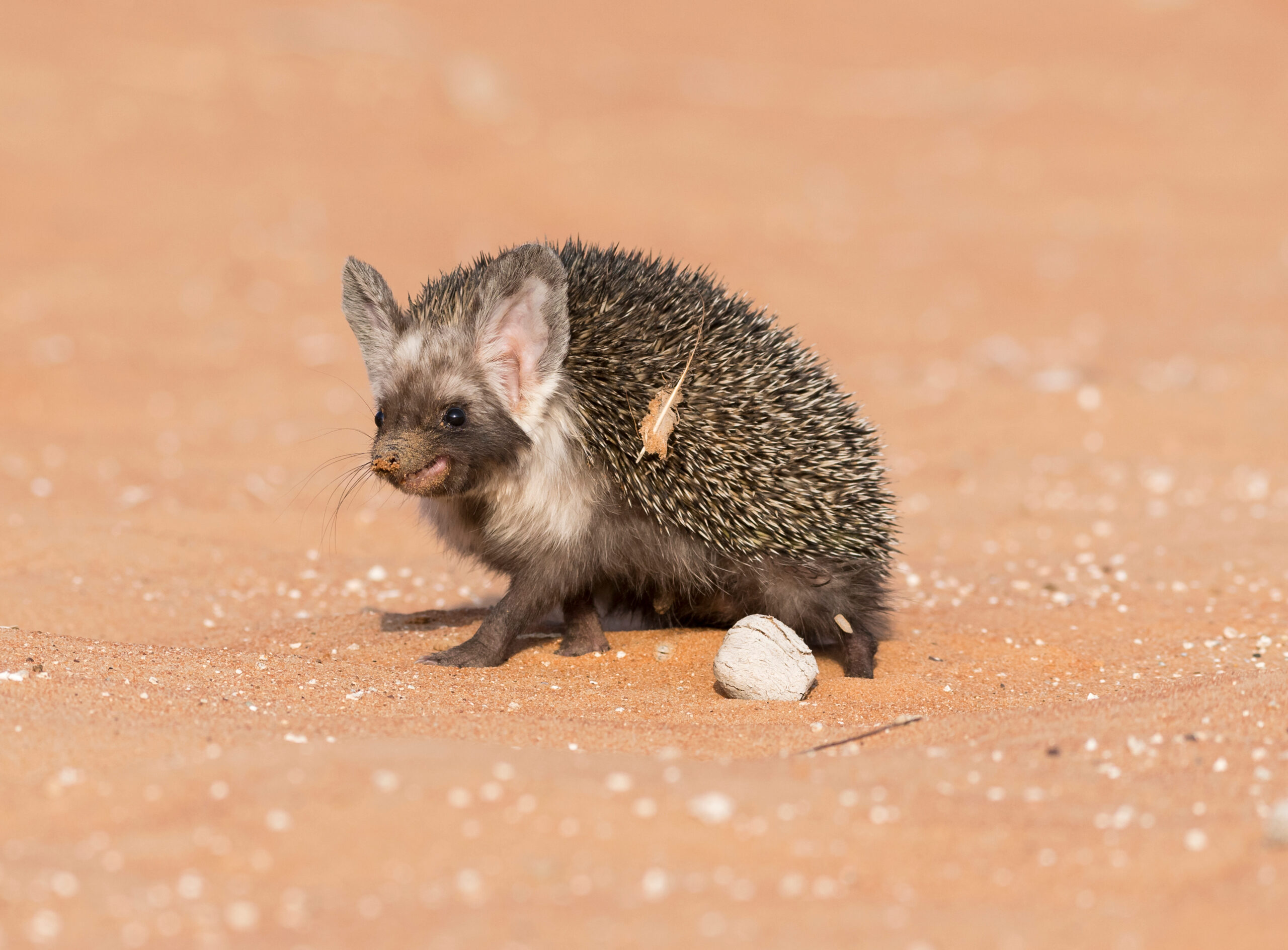
This small mammal, native to North Africa and the Middle East, is equipped with sharp spines that protect it from predators. The desert hedgehog is nocturnal, avoiding the heat of the day by resting in burrows it digs in the sand. Its diet consists mainly of insects, small reptiles, and plants, and like many desert animals, it can survive long periods without drinking water. When threatened, the hedgehog rolls into a tight ball, exposing only its spines, which deters most predators. Its compact size and adaptable diet allow it to thrive in both sandy deserts and rocky terrain. Despite the harsh conditions it faces, the desert hedgehog is well-suited to life in these arid environments.
Jerboa (Dipodidae family)
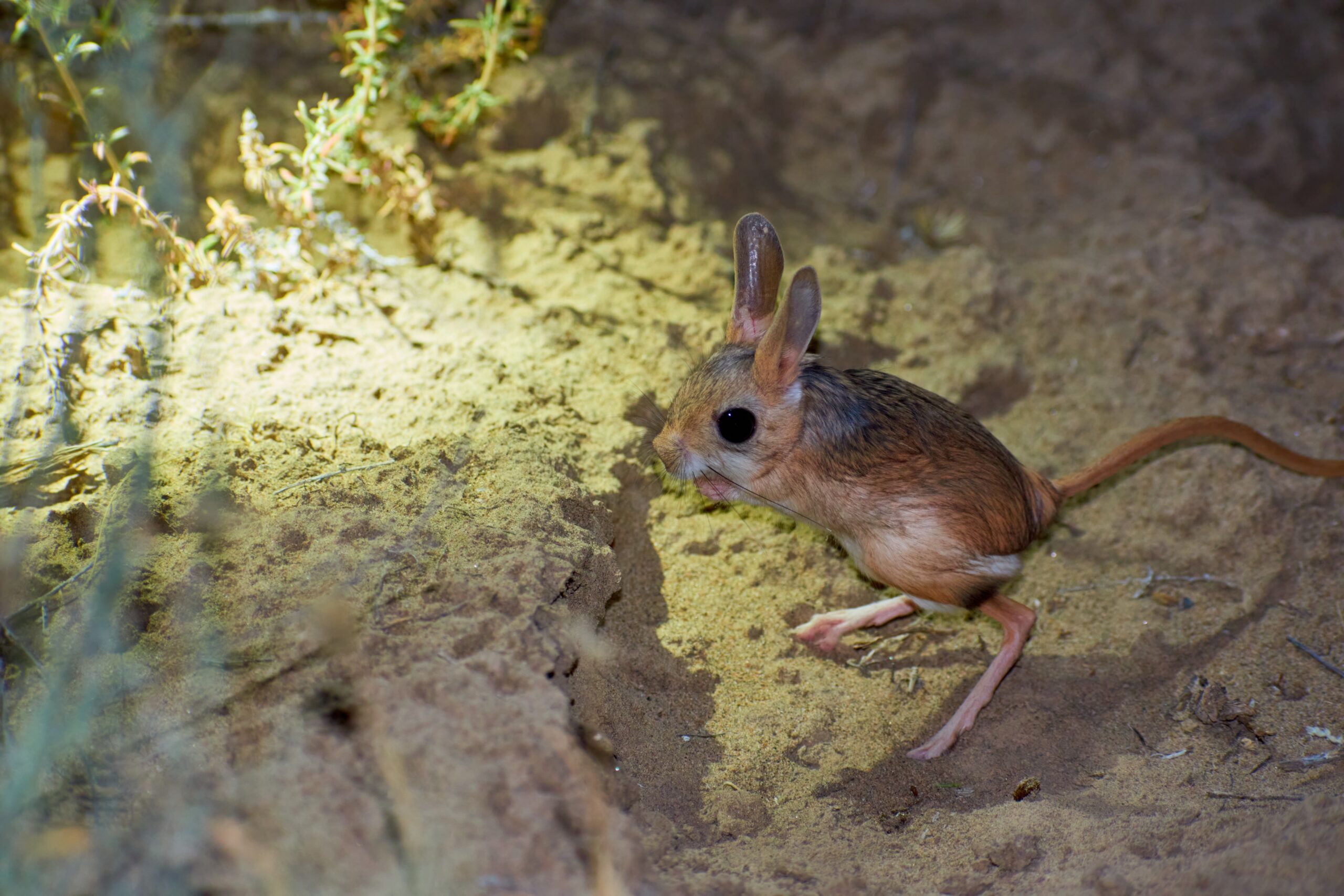
Jerboas, which are small nocturnal rodents, are highly adapted to desert life, especially in North Africa and Asia. Their long hind legs enable them to hop like tiny kangaroos, allowing them to travel quickly across vast desert landscapes while conserving energy. With excellent night vision and hearing, jerboas are well-equipped to avoid predators and find food in the darkness. They primarily feed on seeds, insects, and plants, getting all the moisture they need from their food, thus eliminating the need to drink water. Jerboas burrow into the sand to escape the extreme heat of the day, creating cool underground homes. Their unique jumping ability makes them one of the fastest small creatures in the desert, capable of covering large distances quickly.
Saguaro Cactus Mouse (Peromyscus eremicus)
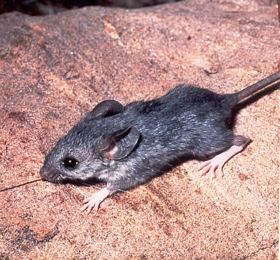
Living in the deserts of the southwestern United States and northern Mexico, the saguaro cactus mouse has adapted to thrive in a harsh, arid climate. It takes shelter at the base of towering saguaro cacti, where it finds food and protection from predators. The mouse extracts moisture from seeds and fruits, allowing it to survive without drinking water for long periods. It is primarily nocturnal, venturing out at night when temperatures are cooler to forage for food. Its brownish fur helps it blend into the desert landscape, providing camouflage from predators. This small mouse plays a key role in the desert ecosystem by dispersing cactus seeds and maintaining the balance of plant life.
Desert Hairy Scorpion (Hadrurus arizonensis)

The desert hairy scorpion, one of the largest scorpions in North America, is well-adapted to desert life. Its thick exoskeleton helps it retain moisture and survive the extreme heat of its environment. It burrows deep into the sand during the day to escape the sun, emerging at night to hunt for insects and small animals. This scorpion uses its large pincers to capture prey and its venomous sting to subdue it. Despite its intimidating size and appearance, the desert hairy scorpion plays a vital role in the desert food web by controlling insect populations. It can go for long periods without food or water, a necessary adaptation for surviving in the arid desert.
Spotted Sandgrouse (Pterocles senegallus)
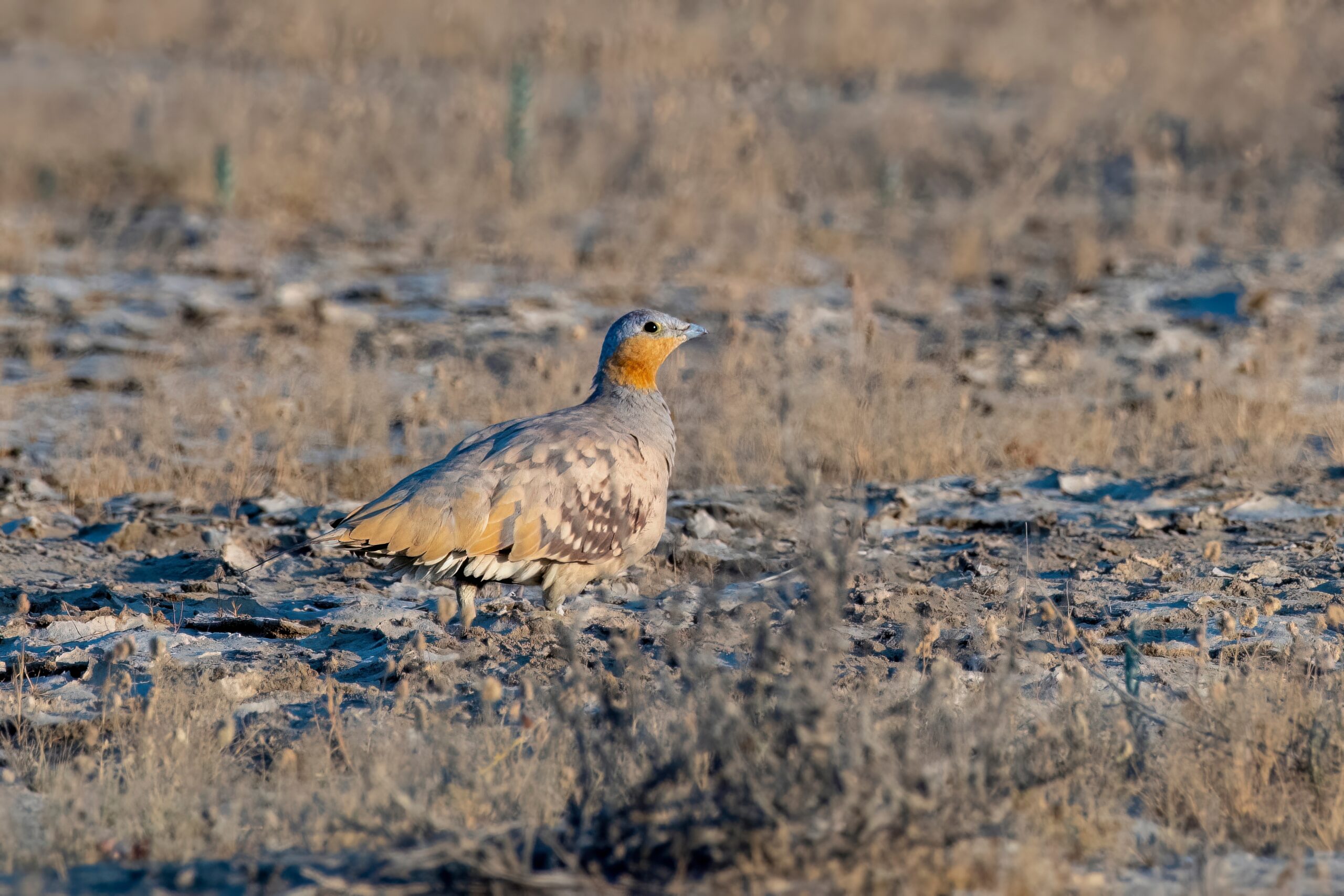
The spotted sandgrouse is a bird native to the deserts of Africa and the Middle East, and it has developed a unique adaptation for providing water to its chicks. Male sandgrouse have specialized belly feathers that can soak up water, which they then transport back to their nests for their young to drink. These birds can fly great distances in search of water, often traveling over 50 kilometers in a single trip. Their diet consists mainly of dry seeds, which provide some moisture, but they still rely on their remarkable water-transporting abilities to keep their offspring hydrated. Sandgrouse are well camouflaged against the desert landscape, which helps them avoid predators. Their strong flying skills and water-collecting behavior make them one of the desert’s most resourceful birds.
Arabian Oryx (Oryx leucoryx)
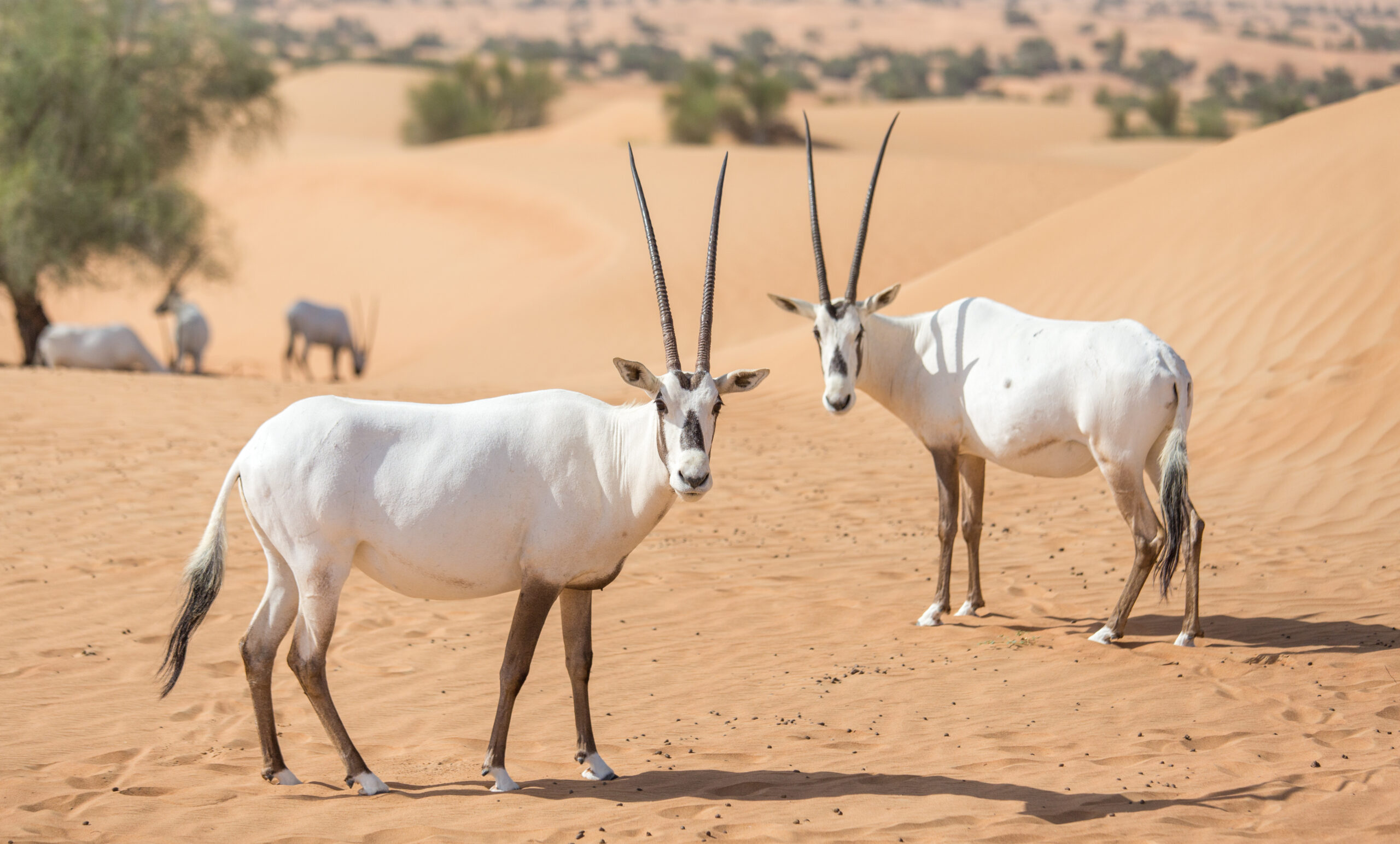
The Arabian oryx is a symbol of desert survival, known for its ability to endure some of the harshest conditions in the Arabian Peninsula. With a pale coat that reflects sunlight, the oryx can stay cool in extreme heat. These animals can go for long stretches without drinking water, as they extract moisture from the vegetation they consume. Arabian oryx are able to detect distant thunderstorms and move toward areas where rain will cause vegetation to grow. Their long, straight horns make them formidable defenders against predators. Though once nearly extinct in the wild due to overhunting, conservation efforts have helped the species recover, and it is now a symbol of resilience in desert ecosystems.
Pygmy Jerboa (Salpingotus crassicauda)

One of the smallest rodents in the world, the pygmy jerboa thrives in the deserts of Central Asia. Its long hind legs allow it to hop rapidly across the desert, moving with remarkable agility despite its small size. The jerboa’s diet consists mainly of seeds and insects, from which it obtains all its necessary moisture, allowing it to survive without drinking water. This tiny rodent is nocturnal, avoiding the heat of the day by foraging at night. Its large eyes and ears give it excellent night vision and hearing, crucial for detecting predators and finding food in the darkness. Despite its size, the pygmy jerboa’s ability to thrive in harsh environments showcases its impressive adaptations.
Crested Porcupine (Hystrix cristata)
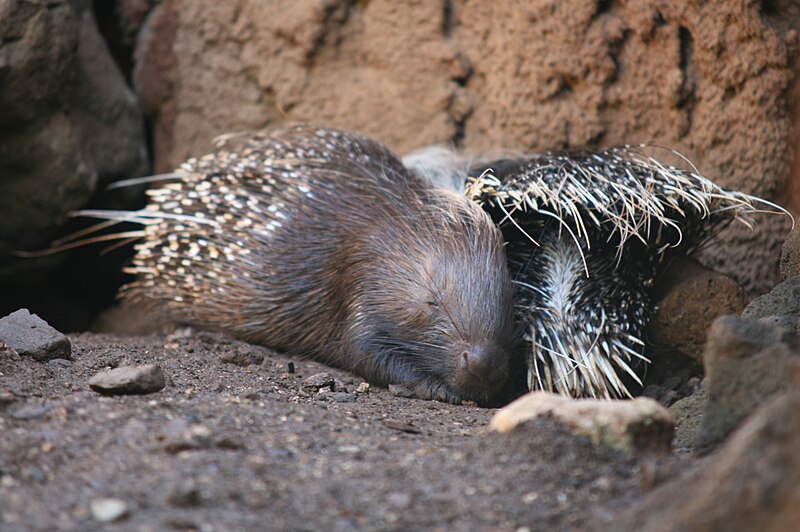
The crested porcupine, native to desert regions in North Africa and parts of the Middle East, is well-protected by its sharp quills. When threatened, it raises its quills and charges backward toward predators, delivering a painful defensive strike. This nocturnal mammal feeds on tough desert vegetation, including roots and tubers, which it digs up with its strong claws. Crested porcupines are excellent burrowers, using their burrows as shelter from the intense desert heat during the day. They can go for extended periods without water, obtaining moisture from their food. Despite their fearsome quills, they play a crucial role in their ecosystems by aerating the soil and dispersing plant seeds.
Sandfish (Scincus scincus)
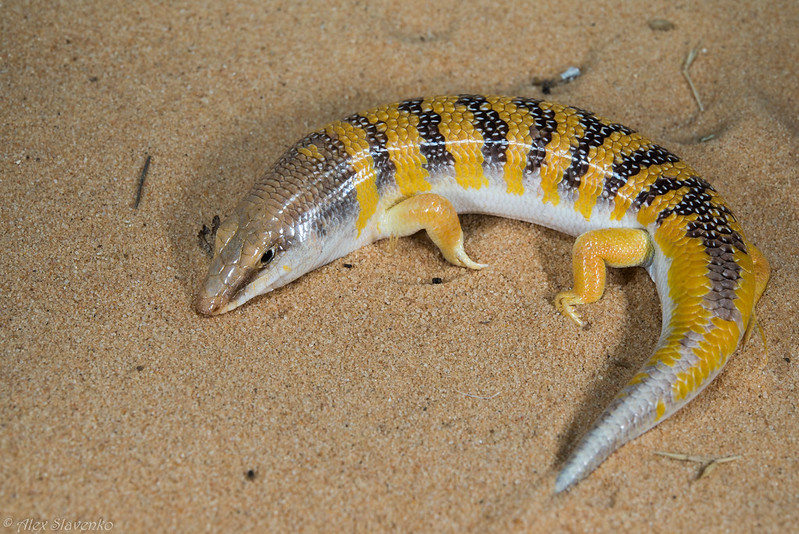
The sandfish lizard, found in the deserts of North Africa, is aptly named for its ability to “swim” through the sand. This lizard has smooth, streamlined scales that allow it to move effortlessly beneath the surface, helping it escape predators and avoid the desert’s extreme heat. It feeds on insects, which it hunts while buried in the sand, using its sharp senses to detect vibrations from prey. The sandfish’s specially adapted skin prevents sand from getting into its eyes, nose, and mouth, allowing it to navigate the sand seamlessly. When threatened, it can quickly dive beneath the surface to hide from danger. Its remarkable ability to live almost entirely under the sand makes it one of the most unique reptiles in the desert.
This article originally appeared on Rarest.org.
More From Rarest.Org
Vintage concert merchandise has become more than just a nostalgic reminder of past shows; it’s now a valuable collector’s item. From rare tour posters to iconic band T-shirts, these pieces of music history have gained worth over time. Read more.
Insects come in all shapes and sizes, but some truly stand out for their massive proportions. From towering beetles to enormous butterflies, these insects are not only impressive in size but also play important roles in their ecosystems. Read more.
Throughout history, some restaurants have stood the test of time, serving meals for hundreds of years and preserving culinary traditions along the way. These establishments offer not just food, but a journey into the past, with each bite steeped in centuries of history. Read more.


